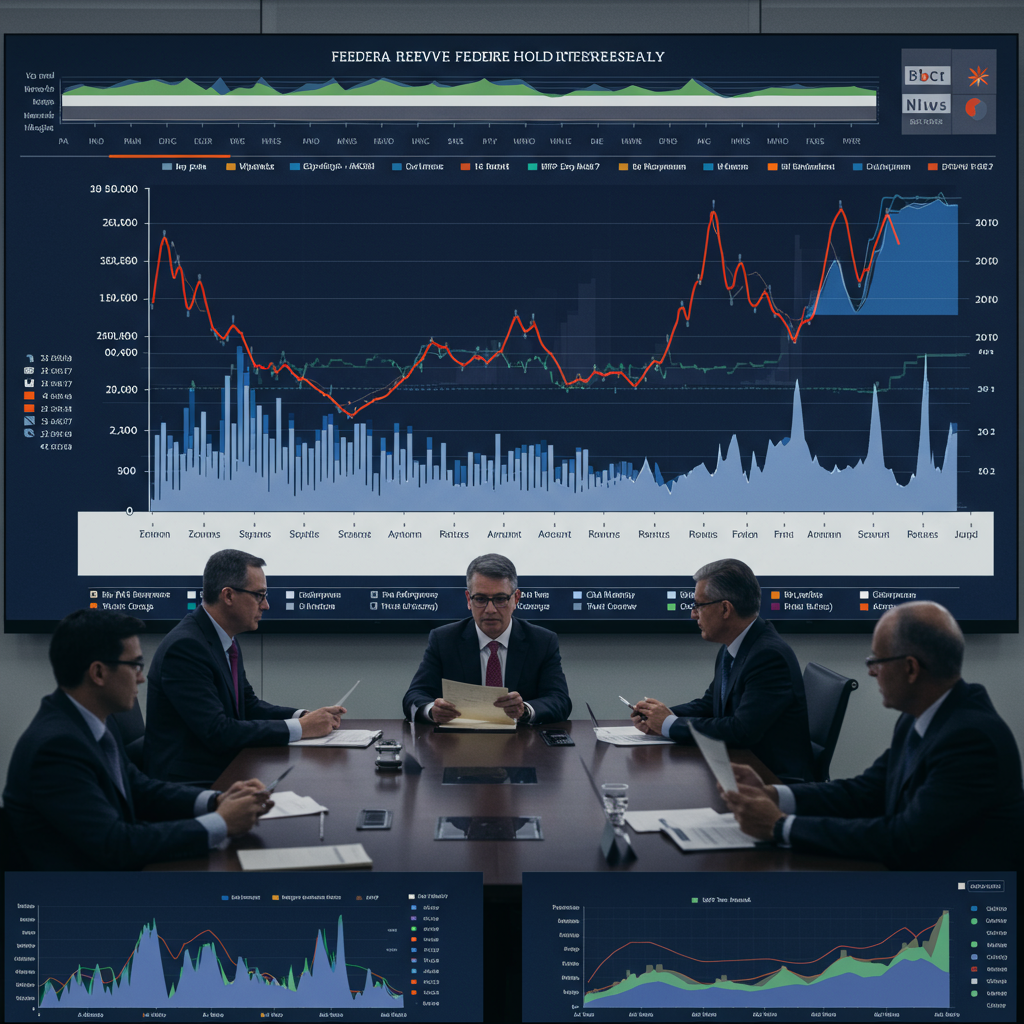Federal Reserve Holds Interest Rates Steady for Fourth Consecutive Meeting
The U.S. Federal Reserve announced Wednesday it would keep its benchmark interest rate unchanged, marking the fourth consecutive meeting the central bank has held borrowing costs at elevated levels. This decision leaves the federal funds rate target range between 4.25% and 4.5%, a level maintained since December and significantly higher than the near-zero rates seen for over a decade.
This pause comes despite increasing economic uncertainty and differing views among policymakers, as the Fed navigates persistent inflation pressures and signs of slowing growth.
Why the Fed Pressed Pause Again
The central bank stated its decision was primarily driven by the need to wait for more data to fully understand the economic landscape. A key factor highlighted by Fed Chair Jerome Powell is the potential impact of newly imposed tariffs. Officials are concerned that the initial price increases resulting from these import taxes could lead to more persistent inflation across the broader economy.
With current inflation readings (like the Personal Consumption Expenditures price index expected at 3.0% by year-end, or the May reading at 2.4%) still above the Fed’s long-term 2% target, the central bank is prioritizing price stability. Powell described holding rates as the “appropriate thing to do” given the unpredictable nature of how tariffs might affect prices and the overall economy.
Revised Forecasts Paint a Complex Picture
Alongside the rate decision, the Fed released updated economic projections that paint a less optimistic picture than just months ago. Policymakers have:
Lowered their forecast for economic growth (GDP) in 2025 to 1.4%, down significantly from 2.1% predicted in March.
Raised their forecast for inflation, with PCE inflation now expected to reach 3.0% by the end of the year (up from 2.6%). Core PCE is also projected higher at 3.1%.
- Increased their projection for the unemployment rate, expecting it to climb to 4.5% by the end of 2025 (up from 4.2% currently).
- www.bbc.com
- www.gzeromedia.com
- m.economictimes.com
- www.aol.com
- finance.yahoo.com
Normally, expectations of slower growth and rising unemployment might signal a need for interest rate cuts. However, the combination with higher expected inflation, particularly fueled by tariff concerns, has compelled the Fed to remain cautious.
What About Future Rate Cuts?
While the Fed held steady this time, their updated projections offered some insight into the future. The median forecast from policymakers now suggests the possibility of two 25-basis-point rate cuts totaling 50 basis points before the end of 2025, potentially bringing the target rate just below 4%. This marks a shift from March, when the median forecast indicated only one cut.
However, there is significant divergence among officials, with some expecting no cuts this year and others forecasting more than two. Furthermore, projections for 2026 and 2027 show slightly higher rates than previously anticipated, suggesting a potentially slower pace of easing in the longer term. Powell emphasized that any future rate adjustments are entirely data-dependent and that the Fed needs “greater confidence yet” that inflation is moving sustainably towards its 2% target.
Navigating Political Pressure and Broader Impacts
The decision comes amidst continued political pressure, with President Donald Trump publicly criticizing Chairman Powell and advocating for immediate rate cuts to stimulate the economy. Powell reiterated the Fed’s commitment to its independence, stating that decisions are based solely on economic data, not political considerations. Some analysts suggest that public pressure might even reinforce the Fed’s resolve to maintain its autonomous, wait-and-see stance.
The elevated interest rates continue to impact borrowing costs across the economy, affecting everything from mortgages for homebuyers to loans for businesses. Market reactions were mixed following the announcement. The current monetary policy stance is a delicate balancing act for the Fed, weighing the risks of persistent inflation (potentially exacerbated by tariffs) against signs of cooling economic activity, while asserting its mandate and independence.




